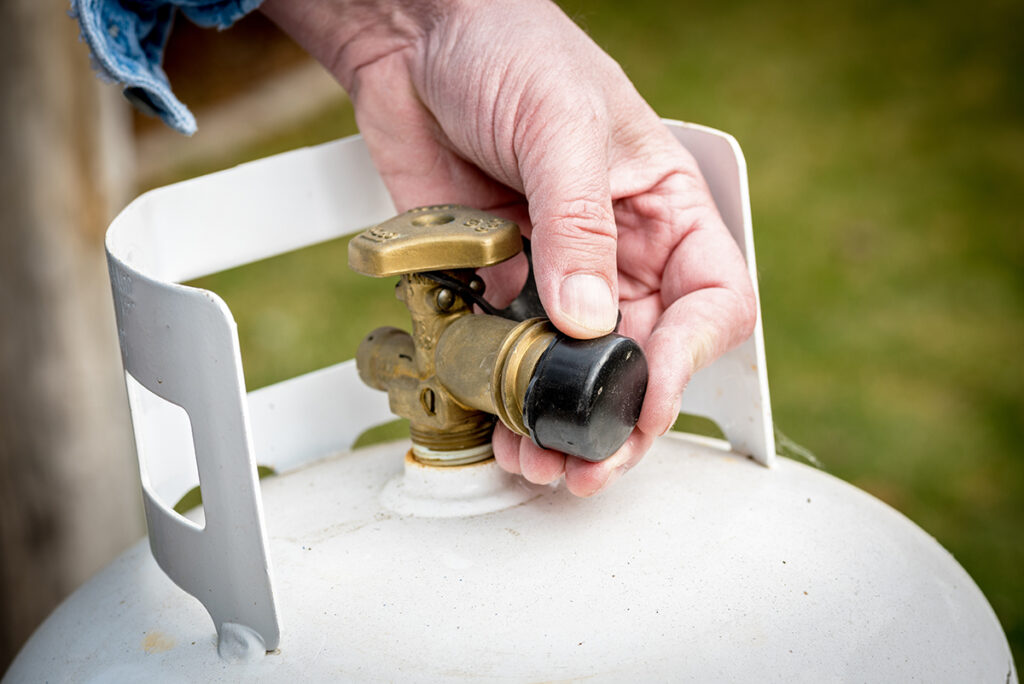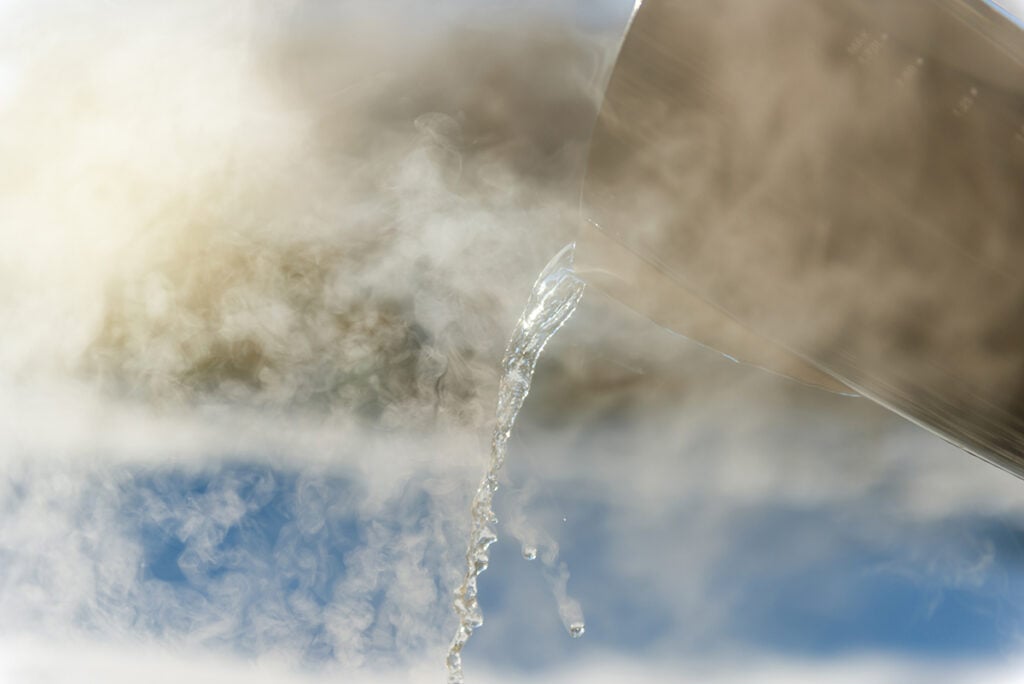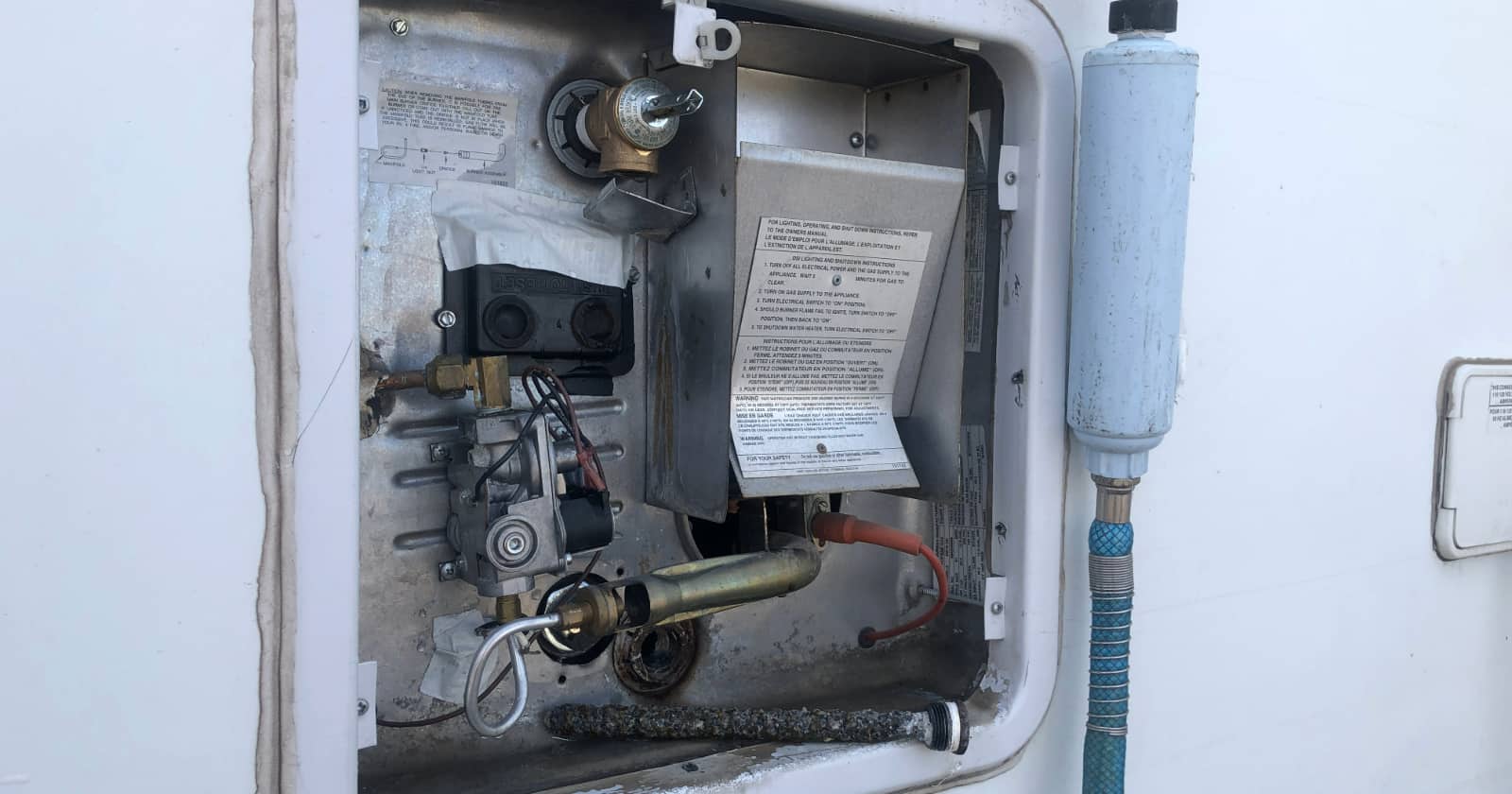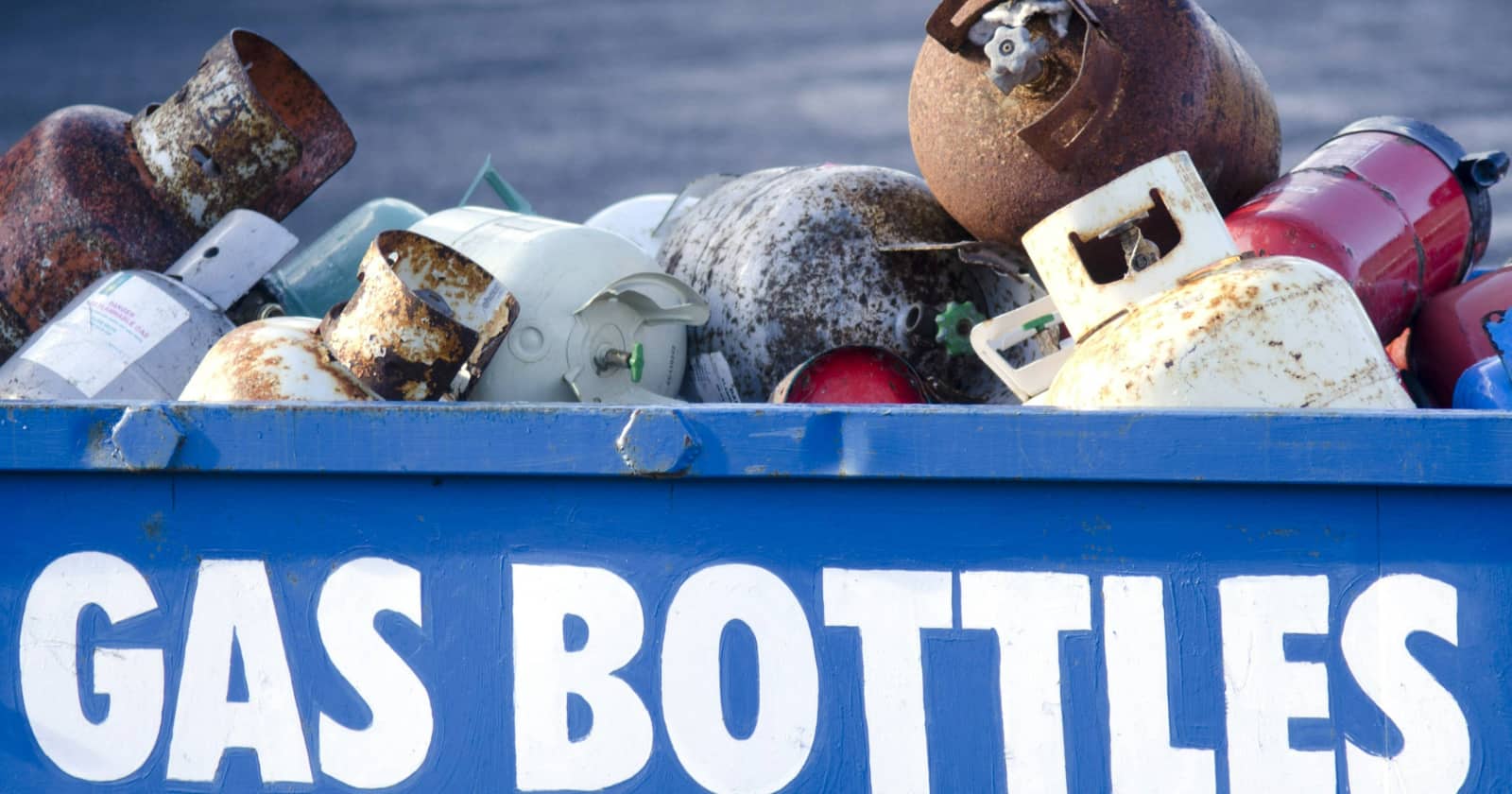
5 Ways To Check Your Propane Level
Most contemporary RVs are equipped with a handy command center where water, power, propane, and other system levels can be checked. However, some smaller or more basic RVs may not have these centers. The people that own these types of campers and trailers usually have to manually check tanks, batteries, and other levels.
If you don’t have an RV level command center, there are other ways to check your propane level.
While it’s not difficult to do this, one of the more challenging levels to check is propane. Liquid propane tanks are not transparent like water tanks. In addition, they can sometimes be a bit heavy to pick up and shake to check what might be left over inside a canister.
There are a few simple solutions for this, and we do mean simple. We will go over five options, from free to around $150.
Free: The warm water method
Liquid propane in a tank will absorb any heat that is subjected to the tank. Because of this, you can check the level of the propane in a tank by simply using warm water.
Heat up some water in a pot to near boiling and pour the water over the side of the tank. Then place your open palm at the top of the tank and move it down. When you feel the tank temperature go from warm to cool, that is where the level of the propane is.
This option works best if your propane is located in a place where you don’t mind pouring water around and is easily accessible.

Cheap: Weight method
If you don’t mind taking out and hefting your propane tank around, you can easily check the approximate level using a household scale (if you own one). If not, there are digital scales made specifically for weighing propane tanks.
A standard-sized propane tank weighs about 17 to 19 pounds when empty. This will sometimes be stamped on the tank as the Tare Weight (TW). When filled, the tank holds about 20 pounds of propane.
Place the tank on the scale to get the total weight and then subtract the tare weight. For example, if the tare weight is 17 pounds, and the tank tips the scale at 26 pounds, then there are about 9 pounds of propane inside the tank. This means the tank is about less than half full.
$20: Propane level gauge
For around $15 to $20, you can pick up a propane tank gauge that measures the level of propane in a tank by using pressure. A gauge is simple to read with a green area that shows a full tank, a yellow area that indicates low levels of propane, and a red area that indicates that the tanks needs to be refilled.
Theses gauges will only work when the propane tank knob is turned on and can be subjected to changes in temperature. However, they can give a fairly accurate indication of level for a cheap price. It is best to use these gauges when the top of your propane tank can be easily viewed or accessed.
$65: Dometic LP gas checker
For a truly hands-off device, this LP gas checker by Dometic just requires that you hold and push the device against your tank and move it down. A red light will indicate where there is no propane; a green light will indicate where the propane level starts.
This option is a little more expensive than the other options, but can’t be more simple to use. Just be sure to keep this small device in a place where you won’t lose it.
Mopeka Tank Check
The Mopeka Tank Check is a sensor that mounts magnetically to the bottom of each propane tank and indicates the level of propane left in the tank. The sensor uses Bluetooth to send the level readings to an app on your smartphone or device.
The Tank Check works with a variety of tank sizes and can even show percentages. The app will still work when your device is about 150 feet away from your tank.
This option could be worth it if you have larger propane tanks that might be more difficult to maneuver. This product is also great for people who love the ease and capability of tech gear.
Join the RV LIFE Community
Forums such as iRV2.com and blog sites like RV LIFE, Do It Yourself RV, and Camper Report provide all the information you need to enjoy your RV. You’ll also find brand-specific information on additional forums like Air Forums, Forest River Forums, and Jayco Owners Forum.
Related articles:




The Mopeka level check is great! I have a level gauge on my camper so no need for the Mopeka there. But I have one on my griddle and one on each of the 30 lb propane tanks I use for the stove in my home. Just pull out your phone and seconds later you know the exact level.
As to the propane gauge, it’s fairly useless in my view. Since it operates on pressure, it will show a full tank right up until all the liquid is gone. At that point, you’re pretty much out of propane.
The Mopeka Tank Check price has dropped considerably; currently $40 ($58 with accessories) and you need one per tank.
You will need a smartphone, and to replace the sensor batteries occasionally.
The regulator pictured in your rig is an automatic regulator. Actuly it is 3 regulators in one designed to switch from one tank to the other autamatically as one tank becomes empty. The indicator (or arrow) indicates which tank will draw down first. When the switchover occurs, there is an indicator to tell you that this has occured. Yes, you must occasionally look at the indicator and if necessary, refill the empty tank. The unit is NOT designed to feed from both tanks at once. Using it in this fashion is defeating the purpose of the design. Automatic regulators of this type have been in use in excess of 60 years and work well. Review the instructions and save yourself a lot of angst, worry as well as time.
On the hot water method: The top of the tank may be quite warm (hot) depending on how hot the water you use is. Best to check temperature of the tank starting at the bottom and move up until temp starts to warm up. Usually using a couple of fingers is sufficient. Prevents possible “overheating” of hand.
I have two tanks. I simply close one and use the other to empty then switch tanks.
OK generally when it is raining, cold and I am making morning coffee but works.
If it is going to be cold I just top off the tank I am using to be sure it does not empty
during the night.